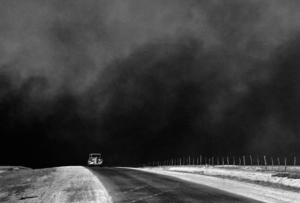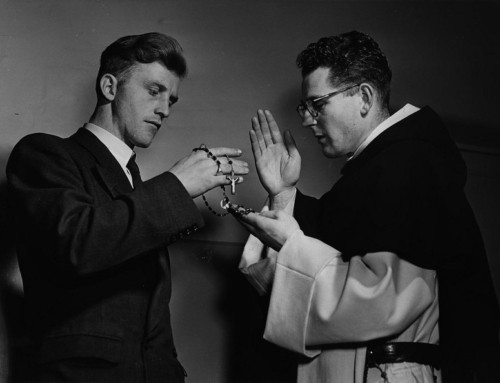I’ve never claimed to have a perfect memory, but nothing signals early-onset senility more than my increasing inability to recall basic memories of my youth (the fact that I’m not yet thirty compounds the crushing sense of finitude). Now, I don’t mean details like my childhood phone number or the name of my first pet (Bob, morbidly obese goldfish). Those I could conceivably do without. I mean the truly important memories, which for me and my family usually means food-laden memories.
If you were to ask me how I (mis-) spent my youth, I’d tell you about multi-week road trips crisscrossing the country, of moving seven times before even starting tenth grade, of telling concerned neighbors we weren’t in the witness protection program, and of course, if you reminded me, I’d have a lot to say about food. At the last count, I’ve eaten in forty-three states. I don’t mean mental states (though that’d be interesting to discuss); I’m talking about meals enjoyed (or not, depending) in dining establishments in the likes of Grand Junction, CO, Bettendorf, IA, Natchez, MS, and so on.
The issue, in a nutshell, is that the grandeur and misery of twenty-plus years of eating with my family around the continental U.S. seems to have overloaded the memory bank. For example, I have this emotionally charged memory of some Chinese takeout that I had for my birthday when I was seven or so. It was, in a word, the Greenwich Mean Time or Imperial Yard, the normative standard for all subsequent experiences of the great culinary traditions of the Far East. Yet when I try to recall simple details (was it mushu pork? sesame chicken?), I always come up with the same baffling mental picture of a dingy overpass in Seattle. Did we buy takeout from a man under the overpass? I couldn’t tell you.
As may be clear already to the discerning reader, these ramblings will be no encomium to the joys of eating on the road, though there were certainly many of those. This is a cautious look in a rearview mirror that’s smudged from being adjusted while the driver was devouring a chili dog from Tommy’s.
Some food memories are crystal clear in the center, but quickly get blurry toward the edges, as when I recall the first time I had honey mustard dressing. I think it was in California. I may have been five. I do know that it was a Coco’s Restaurant with yellow booths, and it was a transcendent experience. As I sat there with my father, grandfather, and assorted other people who don’t matter in this story, it seemed to me that this particular iceberg salad was possibly the most wonderful thing that would ever happen to me. I remember nothing else from that visit to California, or of much else before the age of reason (seventeen in my family), but it’s clearly marked as the Year of Honey Mustard in my mental Rolodex.
On the other hand, there’s a strange facility in recalling the worst or most bizarre eating episodes. For years, the Benders Gravy Incident in Cumberland, Maryland, has been my family’s reference point for any conversation about the worst meal ever. My sister was about to begin college in our nation’s capital, and in true Joad-family style, my parents decided we should all drive her down from the homestead in Ann Arbor, MI. So all eight kids piled in the van, along with my ninety-three-year-old grandfather and possibly a rabbit or two. Besides raucous, off-key singing and the usual violent games of ABC, things were going well until we stopped to grab a bite at a small restaurant built on the side of a mountain in Cumberland, which my father had looked up in advance and had been all sorts of impressed by. We should have known that we were actually in the Twilight Zone when my grandfather’s request for tap water (no ice) posed insurmountable problems for the Benders staff. After delivering everyone’s drinks but his, they returned with profuse apologies and—iced tea. On the third try, they managed to find some water, and came back light on the apologies but heavy on the crushed ice. My grandfather, raised in a mining town in Utah during the First World War, had not survived the Depression for this sort of thing, and said as much. But the high point (or low point, I suppose) was the gravy that apparently accompanies every Benders dish. Heaped in all of its viscous glory and sliding dangerously off the edge of each plate was a mound of what at first glance looked uncannily like the Nickelodeon goo. The gravy’s radioactive yellow-green color (n.b.: a vocal minority of Clarkes maintain that puce is the color in question here) was matched for raw nausea-inducing power only by its weirdly reflective surface, in which you could faintly see your own horrified face.
~~~
Our road trips—which could last from a day to a month—were often planned strategically around where and what we hoped to eat. The first day of an epic three-week, four-thousand-mile trip we took around the western half of the country in the summer of 2009 is a standout example. The target was Ross’ 24 Hour Diner (“Home of the Magic Mountain”), a Quad Cities icon, which holds the distinction of being visited by the likes of Chuck Berry, Bill Murray, and Joe Biden.

Heavy black clouds of dust rising over the Texas Panhandle, Texas (Photo: Arthur Rothstein)
Library of Congress, Prints & Photographs Division, FSA/OWI Collection, LC-USZ62-125986
With the naive enthusiasm we always had on day one of these expeditions, we sat down and, with the exception of my ever-cautious mother, ordered the specialty of the house, the Magic Mountain, a simple matter involving a pile of fries covered in successive layers of nacho cheese and a hearty Midwestern chili that was defiantly liberal in terms of kidney beans. For the full experience (and a mere fifty cents extra), one could elect to cover their Mountain with “snow,” i.e., diced onions. The consensus after the first few bites was that the good people of the Quad Cities had either pranked us good, or they represented a new stage in evolutionary history, as they seemed to have developed cast-iron stomachs. It was inevitable that the next leg of the trip would be full of feelings of betrayal, regret, recrimination, and severe intestinal distress.
Fortunately, our campsite for the night was another seven hours away, and if we weren’t exactly hungry by our 8 p.m. arrival, we were at least ready to eat something that would put Ross’ firmly behind us. It was then, as the sun began to set, that we realized that the Burger King we’d passed about seventy miles back had been the closest restaurant to our campsite. As the younger kids put the tent up, the elders held a council, which ended with my father abruptly assuming the role of hunter-gatherer and driving off into the gathering darkness to “find something edible.” My mother began to heat water for pasta on what looked like a Fisher-Price camp stove, and it had almost reached a boil an hour later when my father returned with his findings: he had raided two gas stations and a local “General Store” for day-old donuts and some suspiciously dusty bags of trail mix, Bugles, and beef jerky. That night, as our camping neighbors called to each other across the way and made interminable and involved plans for breakfast, the Clarke clan ate penne and Oberto’s jerky by the shuddering light of our one camp lantern; some brave souls sampled the donuts. As we all drifted into our giant Coleman tent (“Sleeps twelve with comfort!”), we could hear our neighbors hitching their boats to their trailers with the sort of late-night bonhomie and efficiency that involves a lot of shouting and mischievous honking and flashing lights, and transforms a rustic campsite into a nacho-cheese-and-kidney-bean-induced fever dream.
While we often made our entries in food history en route to a new house, family reunions, or visits to the Grand Canyon, Yosemite, Acadia, and the like, we also weren’t above making trips to food meccas such as Chicago or New Orleans just to eat. They were occasionally termed “cultural expeditions” when my father was feeling Orwellian, and sometimes included half-hearted visits to a local museum or aquarium, but the real point was Lao Sze Chuan on South Archer, or Frankie & Johnny’s on Arabella Street. Quantity often had a quality of its own, one to which we were quite attached. The first time I tried boudin was during lunch (our third meal of the day), not long after a breakfast of beignets at Café du Monde and a brunch of gator pie and catfish at Middendorf’s. I woke up several hours later on a bench in the New Orleans Aquarium, while hammerhead sharks floated close to the glass in front of me. That was par for the course. Normal as this came to seem, it’s still hard to dodge, while compassed about by beignets, boudin, and hammerheads, the fact that there’s something unique and irreducibly particular about the food you find—bad as well as good. Each has and leaves its own fingerprint, its own set of whorls and textures that are deeply and defiantly individual.
To be clear, my appreciation for the toothsome particular was not somehow found on the road, but began at home. It was in the various traditions of birthday desserts, the annual summer “taco bonanza,” the smoked salmon every Christmas Eve and bûche de Noël every Christmas Day. The heart of it all was my mother’s superb culinary chops, her loving attention to detail, and the obvious delight she took in preparing not merely the food but also its recipients. At family dinners, we—myself and the seven alien children my parents claimed were my siblings—received the traditions and were taught the virtues of eating like human beings. There were standards and expectations that were far from trivial and didn’t admit of relativizing interpretations. Since there’s a baseball analogy for everything: the homestand prepared us for the road trip. How (and what) we ordered when we were on the road grew directly out of eating at home and learning what is good and holy, such as the sour cherry bread at Pavé bakery in Everett, WA (now closed, so don’t get your hopes up).
~~~
As is likely clear by now, I don’t have much to say about haute cuisine. There’s nothing elegant about piling slabs of brisket onto pieces of Wonderbread. These experiences of roadfood were in places that seem to grow kudzu-like right out of the soil, natural extensions of a certain place’s timeworn habits of eating. I think this is true even of bizarre (but blessed) hybrids, like the donut and tamale shop we discovered in Natchez, MS. What first appears to be totally out of place may reveal a side of the region you missed the first time around. In this case, the region or city opens up worlds of gastronomic adventure, as had been proven to me a thousand times during my family’s second sojourn in Mississippi. The Mayflower in downtown Jackson has what I still think is the greatest salad dressing the New World will ever produce (I hear France lays claim to honey mustard), and the smell of their liver ‘n onions special was my first sense of the level of depravity that man can sink to. At a Little League game about twenty miles outside the city, I once saw a man in cut-off sleeves sitting alone on the bleachers behind home plate, holding a football-sized pickle in a brown paper bag. From the infield, through the clouds of zeppelin-sized mosquitos, I could see him take the occasional meditative mouthful. In that moment, I knew what it meant that man is by nature capax omnium, capable of all things.
The universe still has unexplored nooks and crannies, even in an age where the internet seems to illuminate everything, making everything at once equally visible and equally dull. Some great places have dingy signs and duct-taped booths, some don’t have a restroom. Some places, the waiter doesn’t even introduce himself, or promise to take care of you. In many of the places where we stopped and in almost all of the ones we loved, there’s none of the overproduced abstractions, the cultivated image, the tell-tale signs that appearance means more than substance for this particular establishment. There’s instead an imperfection that itself is perfective: it heightens your taste, sharpens your vision so that you can focus on the one thing necessary: how’s the food?
I have nothing against health-standards, but I’ve had delicious meals while drenched in sweat and swatting away flies, and eaten expensive Play-Doh made no better by the climate-control and unstained tablecloth. There’s something, of course, to do with a “sense of place,” but it’s very different from what often masquerades under this name: the slavering appetite for what is unique because it is unique, for what is “only found here” because it’s only found here. Sadly, while food tourism is widely and rightly disliked, we don’t tend to notice the family resemblance it bears to the absurd, vague comfort we derive from seeing “locally sourced” printed on our menu. To confound goodness with uniqueness (or its appearance) is a capital vice of our age. But the fact of the matter is: I don’t love Arthur Bryant’s barbecue because I can only find it in Kansas City. That would be high-grade silliness. I love it because it’s metaphysically perfect barbecue, because it’s good—not because it’s “unique.” It turns out that its way of being good has to do with a lot of singular, contingent, inimitable features of Arthur Bryant’s location, history, hickory wood, and direct providential guidance—and this does make it unique. Because it’s good, it’s necessarily unique, a singular and blessed refraction of goodness. So let’s not put the cart before the horse, or the sauce before the rub, shall we?
And yet alongside this particularity, there’s also the generous commonality of good food; they’re cousins—the fried okra, the “Juicy Lucy” burger at St. Paul’s Blue Door, Arthur Bryant’s burnt ends in Kansas City, pastrami and cheesecake at the Stage Deli in New York, boiled peanuts, gulf shrimp and grits in Oxford, Mississippi. Despite the strong differences of culture and taste, there’s a still stronger similarity between muffaletta and alligator pie in New Orleans and Ukrainian brunch at Kramarczuk’s on Hennepin in Minneapolis, between a slice of pecan pie in Louisville and platters of some terrific Lebanese food in Dearborn, Michigan. Their lip-smacking goodness binds them close so that they stand together, defiant exceptions to the faceless tyranny of the glossy and generic. They belong to the rich, mottled community of good things, united despite or maybe through their idiosyncrasies.
~~~
Our eating expeditions were often seasoned by the memories my parents would share of when, for instance, Lusco’s in Greenwood, Mississippi used to serve only pompano and steak, and you could bring coolers of beer in with you. Many times we were returning to a place that my parents had eaten at early in their marriage (my mother has a story of my father driving with his knees while eating a chili dog from Tommy’s and somehow emerging from the car unscathed), or that my father had discovered while working in Boston, New York, or L.A.
New York pizza, pastrami sandwiches, and cheesecake, fresh seafood on Boston’s Fish Pier, or burgers and dogs from good old Tommy’s in L.A.—it was like clockwork: each time I was suddenly drawn into my parents’ past and saw the plates of scallops and bowls of chowder and my parents themselves as they were decades ago. For a moment, I saw the restaurant as they saw it, shared their delight in discovery; I understood more of who they were then. The distance of years was suddenly and silently abridged. Simultaneously, though, I was seeing my parents and the scallops and my mother’s lobster bisque in the present, with my own eyes and emotions and memories and so on. In those moments, history didn’t feel so much linear as layered. Eating together does this. In meals, lives and experiences are fused, memories entwined and extended from parents to children.
The online food reviews that have spotlighted these restaurants came well after, which means that the whole ethos of finding good food while on the road was a vastly different enterprise. Experimentation, recommendation, risk, success and failure were not just different; they were—I speculate—more personal, a kind of close-quarters contact with the uneven surfaces of U.S. culture from which we’re now insulated. In fact, I suppose all this has something to do with my parents’ experience of America, tasted and felt at a time when the country’s restaurants were still caught in the shifts from local and provincial to national (and even global) consciousness, from mom & pop diners and greasy-spoons to chains. Those years saw a vast sea change that led to the generic swamping the specific and smoothing over the fine-grained differences that single this out as magnificent and that as merely decent. As my family hurtled across the country’s interstates and crawled past empty storefronts in small old towns, we got a vision of the shifting sands, the winners and losers, of American life in the twentieth century. Maybe certain chapters of history are learned only by combinations of sight and taste. These sorts of physical impressions are fertile, and the memories that grow from experience develop quickly from the particular this-here-right-now until they shape our understanding of man and his place in the cosmos. It’s because man is the strange animal who not only eats, but thinks and loves, that eating is something more than refueling the body: what we eat and how we eat it end up shaping our affections and ideas about who we are, where we’re going, and what matters in the end.
Our sense of taste has the peculiar power to complement our sight and occasionally correct its prejudices. Sight can be seduced by beauty—or what passes for it—but taste can help distinguish, for instance, the apple which is cosmetically perfect but mealy and tasteless from one that’s misshapen and spotted but has the crisp bite and sweet taste of the real deal. As American culture falls deeper under the sway of cultivated image and manipulated appearance, it’s worth asking whether our habits of eating are held captive by convenience and surface-level attraction, fascinated more by the glitter than the gold. In fact, if the knowledge of human beings begins in the senses—in what we see, feel, smell, taste—then one cultural lament to add to our country’s growing list is the way these senses suffer from the slick barbarism of overstimulation by low-grade luxuries. The net result is boredom, the spiritual heartburn from consuming too much of what means so little.
~~~
I don’t want to give the impression that all eating has at its base some weird educational motives. While my father would often joke about “broadening our horizons,” he often just meant expanding the waistline. The moralizing was eminently practical, as when my saintly mother would turn to my father—as he pulled the car out from a Nashville barbecue joint and the kids in the back began to fall prey to food poisoning on the spot—and say, “Well, dear, what did we learn this time?” To which my father would reply, without fail, “What, you didn’t like it?” The lessons learned had to do with the fine art of distinguishing between various side dishes of an identical shade of fried brown at a meat ‘n three place in the Deep South, and having the canniness to pick out fried okra. Or the foundational axiom of roadfood, that appearances can be deceptive. A dingy, nondescript storefront could hide some superb Indian food (I owe my love for lamb saag, chicken vindaloo and the mango lassi to Amar India in a strip mall in Dayton, Ohio, of all places). A hard-earned bit of wisdom: put no trust in princes, even when they write reputable food reviews. There’s no substitute for walking in and sitting down—even if you only walk out with food poisoning. For all the dining disasters and panicked, late-night searches for the Tums, the rewards are worth it. It’s a long season of eating, and a losing streak or a big loss doesn’t spell total defeat. Need proof? The Seattle Mariners can blow a twelve run lead in the seventh to Cleveland on August 5, 2001, and still tie the MLB record for wins in a season. You could look it up.
That’s not to downplay the darker side of things, the old “nothing gold can stay” sense of melancholy and loss when you discover that even the greatest eats can go bad, or just disappear. Sometimes these places change ownership, or their menu, or just go out of business. The great places are singular and wonderful—and also fragile as crystals. It’s heart-wrenching to come back to a sacred eating site and find that it’s still there but, well, something’s changed.
Some of that can, of course, be our own fault. We can gild certain memories, turning that gumbo or brisket sandwich into something it maybe never was. The privileged place it holds in our memory was given it by—us. And yet the memory’s unreliability may not mean that much, in the end. We always strike some bargain with our food (at least when we take it seriously and don’t confuse it with what we order at Famous Dave’s). We cooperate with our food when we commit to a meal as something more than refilling the body’s fuel supply. We let it form us, influence us, shape our future and determine our past—for better or for worse. And part of that means leaving the window open for disappointment. My family had a whole arsenal of phrases that you’d hear as we approached a new place with anxious anticipation: “Well, it can’t be that bad, can it?” “Look, can’t beat Benders, right?” “At least there’s people in there,” and so forth. It’s a courtship, with all the nerves and excitement of a first date.
There are delicate networks of anticipation and memory that frame and enliven every meal we eat. Meals are always somehow an excuse, an occasion for something that runs far beyond mere nutrition, often on account of the way they provide a setting for conversation. At the same time, though, meals are also the stuff of conversation. We live on the food we eat and the talk that arises out of and about our eating. It’s for this reason that conversations about food are deeply important for us creatures of sense and spirit, of memory and metabolism. Eating creates memories, the sort that lie at the intersection of body and soul. That’s what makes meals so remarkably potent—provided you can recall them.
✠
Download a PDF of this article here.




